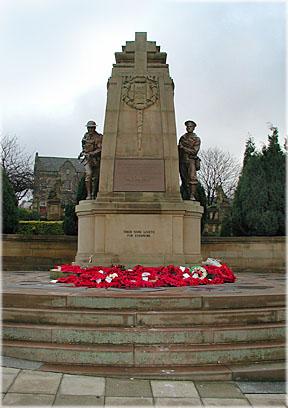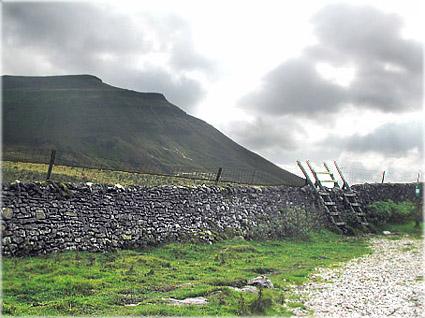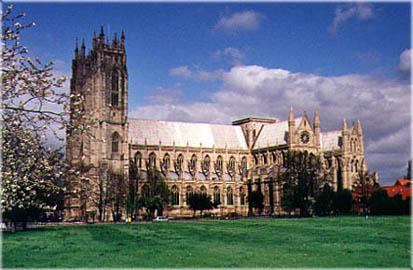December 2000
![]()
At the beginning of November I travelled from Rawdon to the North East. Every river I crossed – Wharfe, Nidd, Ure, Swale, Tees – had burst its banks following the torrential rain of recent weeks. Parts of York, Malton and Selby were flooded as were places like the Severn valley and Sussex. In Durham, where I had dinner (Hollathan’s on Elvet Bridge – I recommend it), the River Wear was raging through the city. But this is England and the news all day on TV and radio led with the fact that, unfortunately, the Queen Mother had broken a collar bone. There were interviews with court correspondents and a professor of geriatrics and archive photographs of the Queen Mother without a broken collar bone were shown. Perhaps I should explain to those of you in what used to be the American Colonies and the Empire, and indeed elsewhere, that the media here regard the Queen Mother as a national treasure like the Elgin Marbles and the Crown Jewels. She is of course over four hundred years old and used to be married to Henry VIII.
| I
always find the Remembrance Day service and ceremony at the Cenotaph in
Whitehall extraordinarily moving. Nimrod is played and the wreaths are
presented and then the columns of service men and women march proudly past
saluting the fallen to the strains of the band playing songs like
‘There’ll Always be an England’. One thinks of the 60,000 British
soldiers killed on the first day of the Somme. The war memorials in every
city, town and village in the United Kingdom. 1940 when Britain stood alone
against all odds until Hitler overstretched himself and the Americans came to
our rescue. The destruction of Coventry in one night. And one remembers the
occasions since 1945 like the Falklands War when our servicemen have died.
‘The glorious dead’ it says on the Cenotaph. Yes indeed, but it is too
much, far too much, to require anyone
to give his life for his country. |
Bradford Cenotaph |
A
columnist pointed out that this has almost become Britain’s national day.
England, Wales, Scotland and Ireland each has its national day; Britain does
not. On this day internal divisions are forgotten. At the Cenotaph are the
Royal Family and all our political leaders united in respect and grateful for
the sacrifice of previous generations for Britain and freedom. Nearly everyone
wears a poppy, that poignant symbol of the absolute horror of the First World
War. Nor does the occasion become less meaningful as the years progress.
Though the two minutes silence was officially moved to the nearest Sunday
decades ago, people still stop and remember at the eleventh hour of the
eleventh day of the eleventh month, when the guns finally fell silent in 1918.
|
Ingleborough |
In
an article in the Times last month Andrew Morgan described climbing Whernside
from Ribblehead. Whernside is one of Yorkshire’s Three Peaks – Whernside
is 2414 feet, Ingleborough 2375 feet and Pen-y-Ghent 2276 feet. Garry climbed
them (yes, all three) one day (yes, in one day) earlier this autumn. Andrew,
whom I know, began his climb from Ribblehead station, which he says has
recently been refurbished in the original burgundy and cream livery of the
Midland Railway Company. The article caught my attention by its opening line:
‘Nothing brings out Yorkshire stoicism like driving rain on a bare fell’.
Many of us can relate to that. |
Last
year a book called England’s One Thousand Best Churches by Simon Jenkins was
published. Of his top twelve churches three are in Yorkshire. Two are Beverley
Minster and Selby Abbey. ‘Beverley’s glory is promiscuous and loud.
Selby’s is that of a stately old lady, retired to the country with her
dignity and memories intact’. The third is St Patrick’s at Patrington on
the Holderness peninsula east of Hull, a prosperous farming area in the Middle
Ages. It is English Gothic in the Decorated style of the early fourteenth
century. A photograph at the start of the book describes the church as the
‘Queen of Decorated Gothic’. It is built of limestone with an elaborate
octagonal tower and looks beautiful. I must get there sometime soon.
| At
the end of November I found myself again in the North East just as the
spectacular new bridge over the Tyne was being put into place by the most
enormous crane. The high point of my visit, and compensation for being again
away from home, was going to see the Royal Shakespeare Company perform Henry
V. I was privileged to see Kenneth Branagh’s brilliant Henry V at Stratford
upon Avon a few years ago and this production too was stunning. It is a
marvellous play. ‘We few, we happy few…’, those same words echoed in
1940 by Winston Churchill after the Battle of Britain. After the performance
some of the cast took questions from the audience about this modern dress
interpretation. It all left one, as 400 years ago Shakespeare intended,
contemplating the human condition, the contradictions of life and this place
called England. I emerged from the Theatre Royal into reality. Believe me,
Newcastle city centre at 11.30 at night on a Friday is like the Wild West. |
Beverley Minster |
So, the last year of the twentieth century, and of the second Christian millennium draws to a close. I hope you have a very happy time at Christmas and best wishes for the New Year, 2001. I shall be spending the holiday at home with my family. In Yorkshire. I really wouldn’t want to be anywhere else at Christmas.



